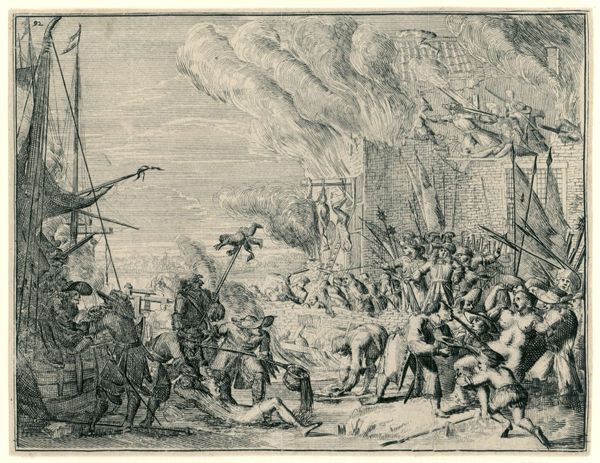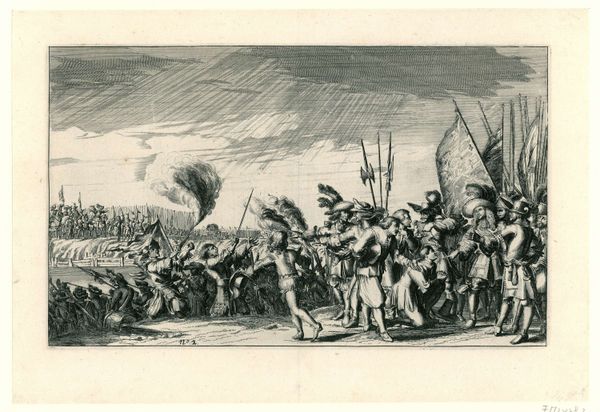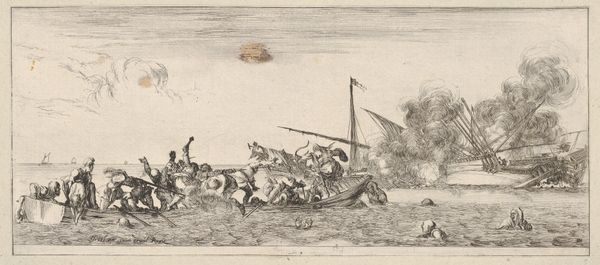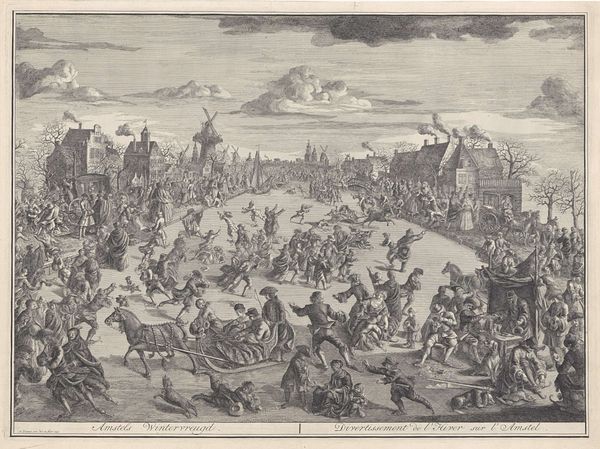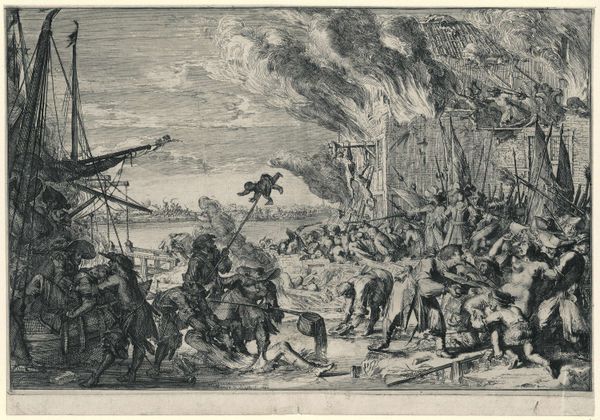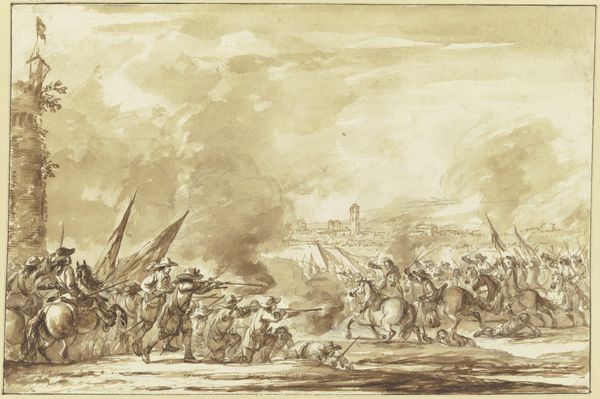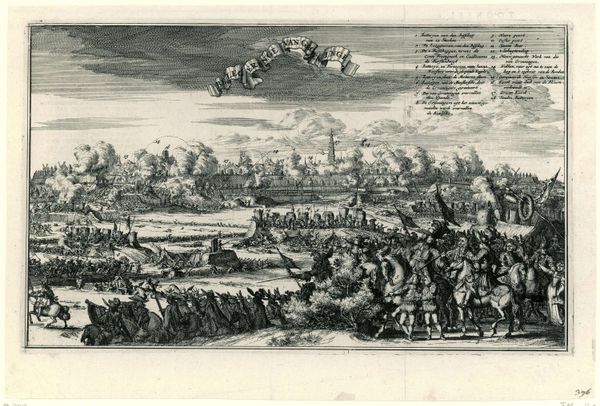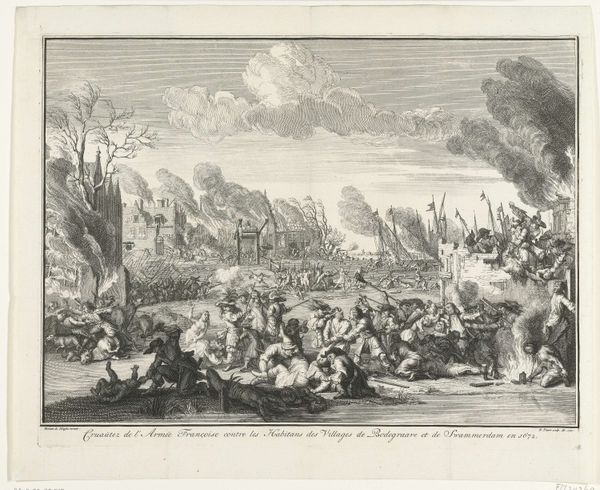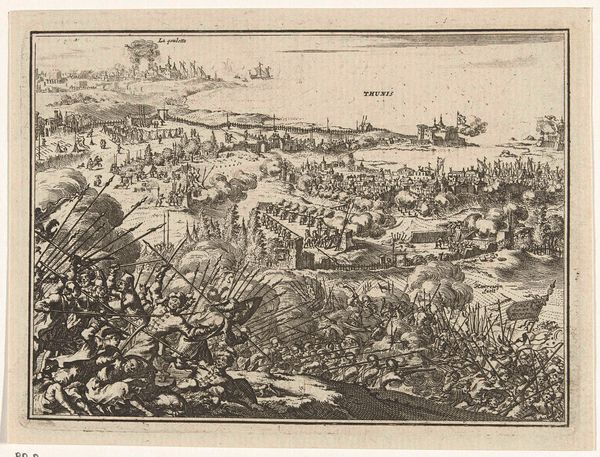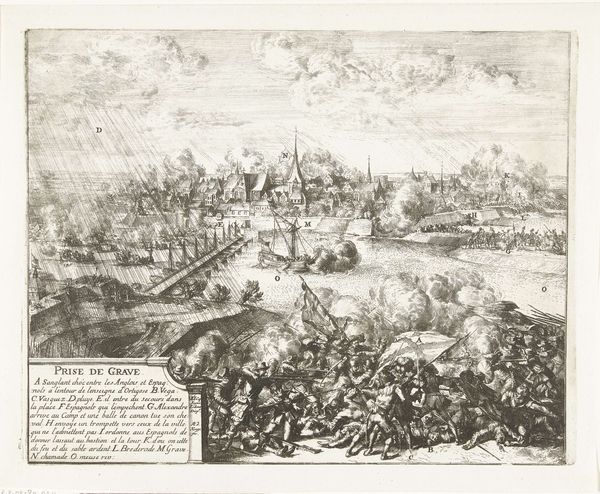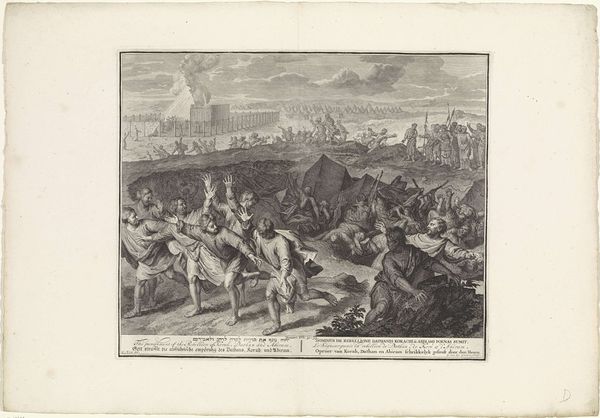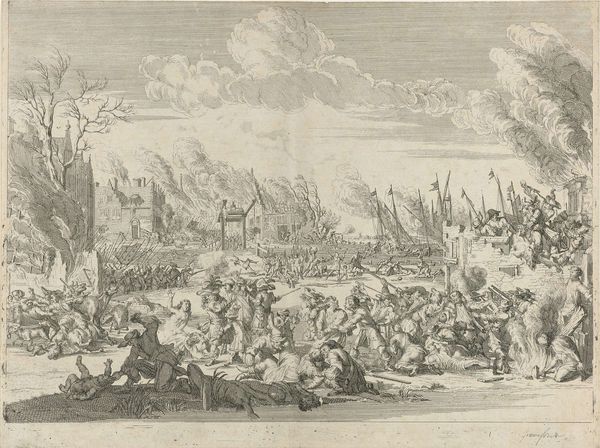
print, ink, engraving
#
narrative-art
#
baroque
#
pen drawing
# print
#
ink
#
line
#
history-painting
#
engraving
Dimensions: height 220 mm, width 327 mm
Copyright: Rijks Museum: Open Domain
Curator: It's immediately striking how detailed and, well, brutal this engraving is. The stark contrast of black ink on the white paper really amplifies the drama. Editor: Yes, this print by Romeyn de Hooghe, created in 1673, titled "Twee voorstellingen van Franse wreedheden, 1672" or "Two Representations of French Atrocities, 1672" held here at the Rijksmuseum, speaks to the fraught political climate of the Dutch Republic at the time. Its social role as propaganda is very apparent. Curator: Propaganda it may be, but look at the skill involved. The line work is incredible, considering this is an engraving. What would have been the cost to make it, in labor and materials? Was it widely distributed? The level of detail, particularly in depicting the figures and their clothing suggests a degree of skill only attained through labor, likely through apprenticeship or collaboration in a studio context. Editor: Indeed. It circulated as political commentary, fueling anti-French sentiment during a period of conflict. It visually cemented narratives of French barbarity, influencing public opinion through carefully constructed imagery and disseminated as broadsides or incorporated into pamphlets, shaping the perception of these historical events for a wide audience. Curator: Note, too, the visual weight given to scenes of violence; corpses litter the foreground, emphasizing the aftermath and consequences of war in the Dutch landscape and the very waters surrounding it. Consider the impact of such readily reproduced images upon the wider Dutch populace? It’s a medium perfectly suited for political persuasion! Editor: Absolutely, and that juxtaposition reinforces a calculated image of French barbarity meant to inspire resistance. The choice to display these 'atrocities' also normalizes this political stance as not merely anti-French, but Pro-Dutch, cementing social and political boundaries through imagery. The effect on Dutch society must have been enormous. Curator: Looking at it again, one is made more than ever aware of print’s role in both the social arena, and artistic production: something readily available which gives access to, in this case, politically charged sentiment that still moves even after all these years. Editor: It serves as a potent reminder of the complex relationship between art, war, and public perception, the very cornerstones upon which both art and politics stands.
Comments
No comments
Be the first to comment and join the conversation on the ultimate creative platform.
